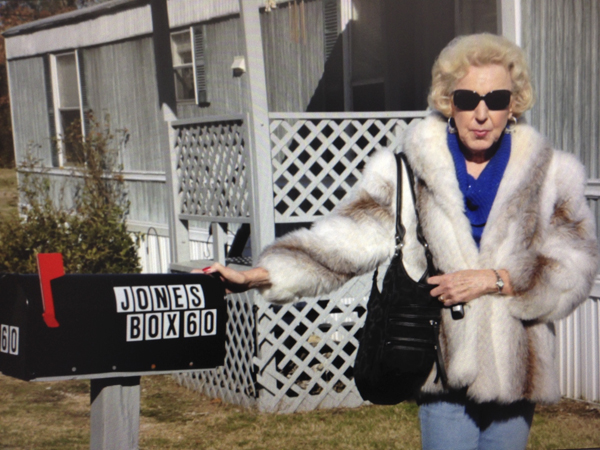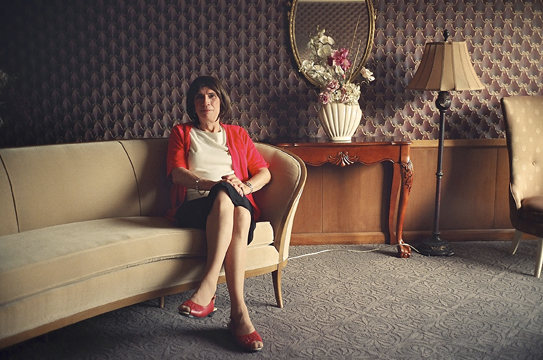This year’s DOC NYC festival will feature several films focusing on transgender lives. This is not exactly a surprising development, as the rights of trans persons have very much been in the news of late. For one example, a bill signed into law in North Carolina earlier this year would restrict bathroom access in public buildings to the gender listed on one’s birth certificate. There is also the popular success of the web series Transparent, another sign that trans stories are not merely on the fringe anymore but are becoming more mainstream.
The subjects of four documentaries come from all walks of life, are of various ages, and live in places ranging from big cities to small towns. By offering such breadth, the filmmakers and the festival demonstrate that the term transgender defies easy generalization.
Becoming More Visible
Each one of a quartet of New Yorkers profiled here has a personal goal, which does not necessarily end with gender-reassignment surgery. (Some have undergone it, and some have begun transitioning through hormone medication.) In the interim, the film follows them through late adolescence or early adulthood, which would be a trying time for anybody and being transgender only adds to the complications.
The diverse foursome includes Olivia, who is African American; Morgin, who grew up in a religious Puerto Rican household; and Katherine. She is Bangladeshi, and still lives with her very conservative Muslim family. They are all transitioning from male to female, while the fourth person featured, Sean, transitioned from female to male. (He is, in fact, the sole male trans person among the four films at DOC NYC focusing on transgender issues.) As the filmmakers cut back and forth between the four, a recurring thread is the strained relationships with parents and other family members. Katherine’s home life, in particular, feels decidedly tense, with her mother responding to her daughter only tentatively and her father declining to appear on camera.
The film doesn’t shy away from discussing the harsh realities facing transgender youth, such as homelessness and depression. Due to its structure, the lives of all four progress in parallel, and so there arrives a point at which everyone seems to be simultaneously struggling with post-op complications, their home lives, and loneliness. But there also comes a time at which the viewer can sense all of them becoming more comfortable in their transitioning bodies and overall lives. Becoming More Visible is largely conventional, but its mission of humanizing transgender youth is moving, and the quartet’s baby steps feel like leaps.
Becoming More Visible will screen on November 11 and November 14.
Woman on Fire
Equally triumphant is the story of third-generation New York City firefighter Brooke Guinan, who is also the first trans woman to actively serve in the Fire Department City of New York (FDNY). This is a look back on her life thus far, including her relationship to her conservative parents, who admit that their child’s coming out as gay, which he did at age 11, was emotionally devastating to them. The bond between Brooke and her father is especially tenuous, though that rift starts to mend after the attacks on September 11, when she, then a gay man, decided to become a firefighter.
The film offers insights into firefighter culture, which, in the case of the FDNY, is highly traditional—male and heteronormative. This made Brooke’s struggle to fit in a prolonged ordeal, and the sexism proved not to be one-sided. Even the United Women Firefighters, the professional organization for the FDNY’s female firefighters, debated for six months whether to allow Brooke to join. Despite ostracism from her peers, she perseveres thanks to a friendship with another outsider on the force; her transition, which after some initial complications starts to make her feel at home more in her skin; and her first ever serious romantic relationship to a straight man named Jim.
While she and Jim move in together and discuss marriage, things do not always go so smoothly. But this plotline also helps create real stakes. On the other hand, the issues that crop up as Brooke attempts to create a new family for herself allow her biological one to reenter her life, though with more open arms this time. It all adds up to something more than a profile of a singular heroic person; it’s the story of a family that overcomes its initial anxieties to accept one of its own.
Woman on Fire will screen on November 15 and November 17.
The Joneses
Doc NYC is also hosting a few transgender stories that don’t take place in New York City, such as this fascinating character study of a septuagenarian who decided to transition at a relatively late age. Jheri Jones, formerly Jerry Jones, lives in a Mississippi town and in an enormous trailer with two of the four grown-up sons she fathered while still a man. What follows is a sentimental portrait of a nontraditional American family, yet one that is functional and cares for its members. Of Jheri’s live-in sons, Brad has serious health issues stemming from obesity, while Trevor suffers from depression and recently came out as gay.
During the first half, the main conflict seems to be between Jheri and Trevor, who still resents his father for disappearing from his life, which occurred after Jheri divorced the children’s mother and began the process of transitioning. The tension between them is palpable when they’re having an argument and Trevor accuses Jheri of being too self-absorbed. His diagnosis is not incorrect: Jheri, who the viewer first meets showing off her body in a swimsuit for the camera, possesses a joie de vivre that seems derived from knowing herself and at last living as that person. As the film progresses and Trevor makes peace with his sexual identity, his mood also lightens.
Jheri is compelling enough to spend time with, but the film meanders for a while in search of a plot, eventually settling on whether she should reveal her secret to Nick and Trini, her grandchildren through another son. In the meantime, the film settles into the sleepy rhythms of its Southern backdrop while regularly cutting to the expected iconography: churches, trailer parks, a Confederate flag. One might assume there would be open hostility toward a transsexual woman, but there are places, even houses of worship, where she is welcome, although it’s clear not everyone is ready for Jheri. As such, The Joneses not only challenges our vision of a “normal” family but where they might choose to live.
The Joneses will screen on November 16.
The Pearl
Four Pacific Northwesterners have, for much of their lives, kept the truth of being women in men’s bodies from those around them. They include Nina, who has a wife back home in British Columbia who knows nothing of her true gender; siblings Jodie and Krystal, who live together as women in Portland but who grew up without realizing they shared the same deep loneliness; and Amy from Washington State, who dressed in women’s clothes for years but only took on life as a trans woman after his wife’s death. Now with societal attitudes towards transgender people changing, there is opportunity for their true selves to emerge.
While examining the subjects’ lives in the present, the film also conveys the emotional and psychological toll that comes from so much secrecy over a lifetime. For example, Nina stares at old photographs of herself in women’s attire, and we can see the longing in her eyes. The overall tone is brooding and intense, while the cinematography makes use of shadow and close-ups to reveal what seem like years of sadness and regret etched on the protagonists’ faces. Yet there are also moments of cathartic joy, such as Krystal and Jodie’s vacation trip to Hawaii, during which Jodie goes out in public as a woman for the first time. Returning to their hotel, he revels in the newfound liberation. Moments like that prove inspiring.
The Pearl will screen on November 16.









Leave A Comment